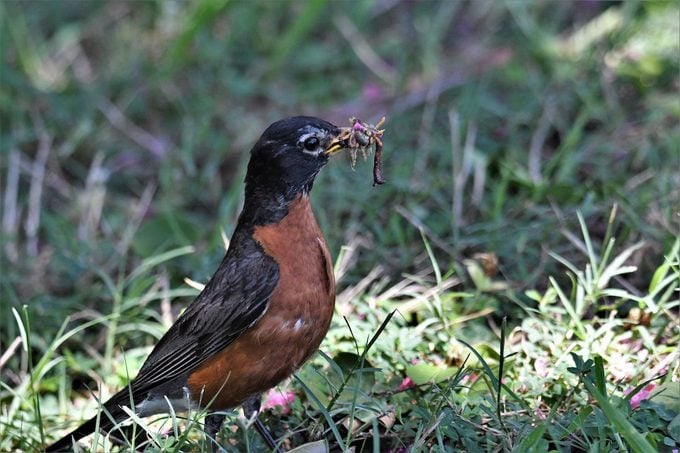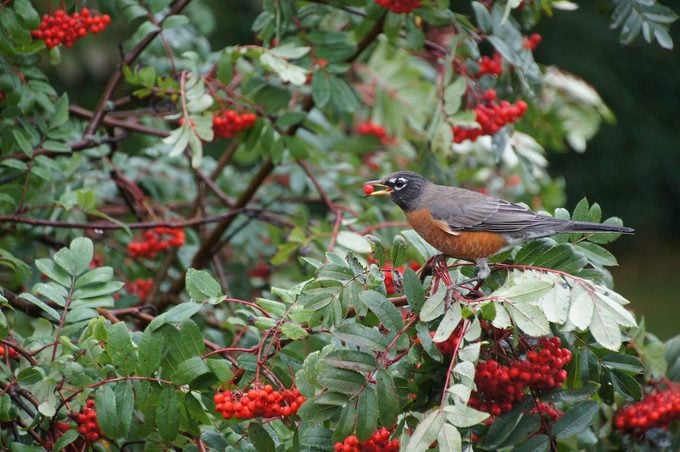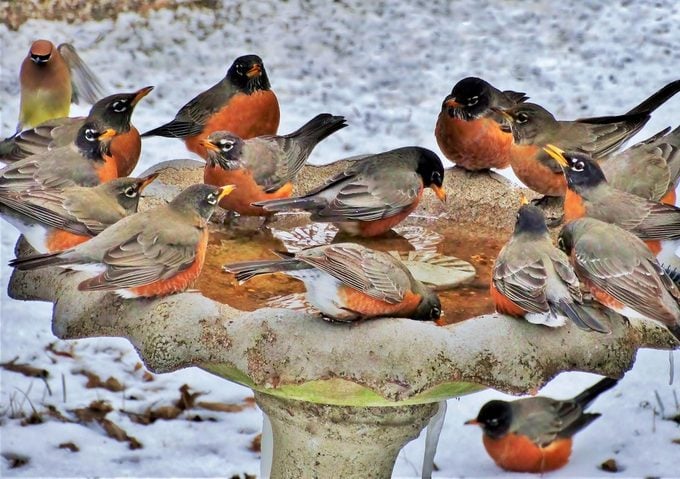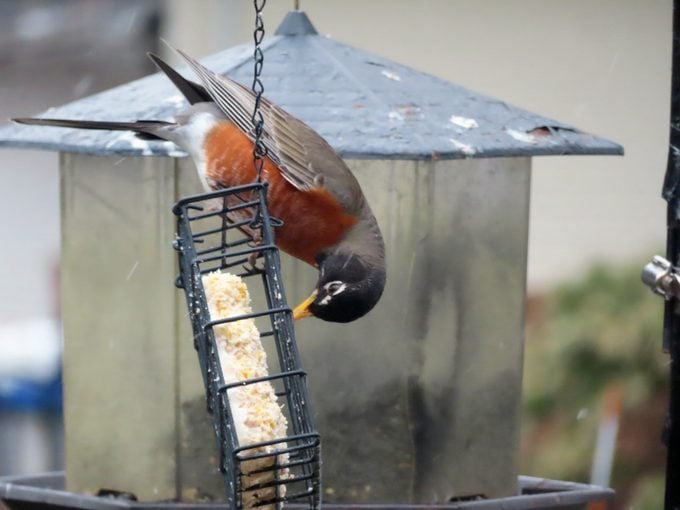What Do Robins Eat? How to Attract Robins
Updated: Feb. 08, 2024
Find out what robins eat in all seasons. Attract robins with their favorite foods and learn if you can bring them to seed and suet feeders.
American robins are commonly spotted (and heard) in backyards throughout most of North America. Watch for robins in your yard, no matter what the weather is like. Find out what foods robins eat and how to attract these birds throughout the year.
Learn all about robin nests and eggs.
On This Page
Do Robins Eat Bird Seed?

Robins are not seed eaters, so you won’t attract them with seed bird feeders. Instead, look for them on the ground. Every child knows that robins eat worms. But they also eat lots of other things, too like insects, grubs, and even snails. We tend to notice them around our gardens because they hunt for these things on the ground.
The next time you observe an American robin in your yard, notice how they curiously tilt their heads. They do this to listen for juicy worms. Robins use both visual and auditory clues to hunt down their favorite slimy snack.
Robins also eat fruit, which they search for in trees and shrubs—not where we’re used to seeing them. When winter comes, the worms and insects aren’t as available to them, so during the cold months their diet consists mostly of fruit.
What’s the difference: European robin vs American robin.
How to Feed and Attract Robins in Winter

As the ground thaws and worms break through the surface, robins, members of the thrush family, become more active and visible again. But you can attract robins to your yard even when it’s snowing. In winter, flocks of robins gobble up berries from shrubs and trees. You can attract robins to your yard with trees that bear fruit in winter such as chokecherry, hawthorn and dogwood.
You can also create small piles of leaf litter around your yard to attract robins. According to the National Wildlife Federation, leaf litter is a natural habitat for insects, which in turn provides a backyard dining spot for grub and insect-eating birds such as robins.
How to Attract Robins to Feeders

“A flock of robins stayed with us last winter and ate all the berries growing in our area. How can we attract them to feeders?” asks Birds & Blooms reader Susan Petrch of Millbrook, Ontario.
Birding experts Kenn and Kimberly Kaufman say, “Robins aren’t typical feeder guests, but there are some things you can try. It’s best to place an open tray feeder near one of the berry-producing trees frequented by the robins and stock it with raisins, apple slices or other fruit. You can also offer mealworms or suet.
But it’s normal for flocks of robins to be nomadic in winter, wandering long distances and stopping when they find a natural food source. Once they’ve depleted the local berry supply, most likely they’ll be off in search of the next berry crop instead of sticking around at feeders.”
Did you know: Robins also visit bird baths for fresh water. You can offer a heated bird bath in the winter to bring these birds to your yard.
Enjoy cheerful robin bird pictures to welcome spring.
Do Robins Eat Suet?

“Is it uncommon for robins to like suet? I’ve had one visiting my feeder twice a day,” asks reader William Toth of Mechanicsburg, Pennsylvania.
Kenn and Kimberly say, “Although people tend to think of robins as strictly worm eaters, they actually have quite a varied diet. Wild fruits and berries make up a big part of their diet, especially in fall and winter, when worms are much harder to come by. Robins are not commonly attracted to feeders, but sometimes an individual will key in on a feeder offering mealworms, raisins, suet or even grape jelly, and will start visiting it regularly.”
Next, find out if robin sightings have special meaning.
Additional reporting by Kirsten Schrader
About the Experts
Kenn and Kimberly Kaufman, authors of the Kaufman Field Guide series, are the official birding experts for Birds & Blooms.
Sources
Why Trust Us
For nearly 30 years, Birds & Blooms, a Trusted Media Brand, has been inspiring readers to have a lifelong love of birding, gardening and nature. We are the #1 bird and garden magazine in North America and a trusted online resource for over 15 million outdoor enthusiasts annually. Our library of thousands of informative articles and how-tos has been written by trusted journalists and fact-checked by bird and garden experts for accuracy. In addition to our staff of experienced gardeners and bird-watchers, we hire individuals who have years of education and hands-on experience with birding, bird feeding, gardening, butterflies, bugs and more. Learn more about Birds & Blooms, our field editor program, and our submission guidelines.

